HUMANITIES ALIVE
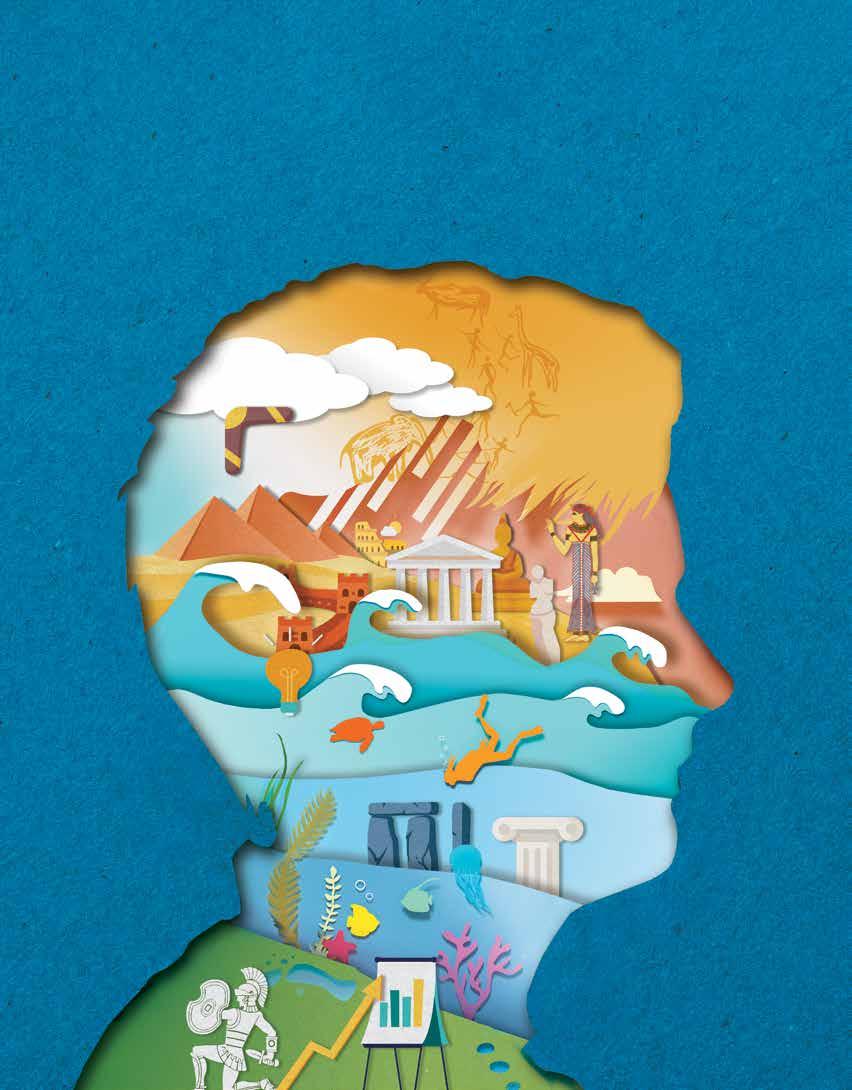


AUSTRALIAN CURRICULUM | THIRD EDITION
ROBERT DARLINGTON
JUDY MRAZ
BENJAMIN ROOD
GRAEME SMITHIES
MATTHEW RICHARDSON
CATHY BEDSON
HELEN RABENDA
ANNE LOW
SIMON PHELAN
CONTRIBUTING AUTHORS
Karen Bowden | Alex Scott | Rachel Wallis | Benjamin White
REVIEWED BY Courtney Rubie, Wiradjuri woman
Rachel Wallis, Wiradjuri woman
Third edition published 2023 by
John Wiley & Sons Australia, Ltd
Level 4, 600 Bourke Street, Melbourne, Vic 3000
First edition published 2013
Second edition published 2018
Typeset in 10.5/13 pt TimesLT Std
© John Wiley & Sons Australia, Ltd 2013, 2018
The moral rights of the authors have been asserted.
ISBN: 978-1-394-15093-9
Reproduction and communication for educational purposes
The Australian Copyright Act 1968 (the Act) allows a maximum of one chapter or 10% of the pages of this work, whichever is the greater, to be reproduced and/or communicated by any educational institution for its educational purposes provided that the educational institution (or the body that administers it) has given a remuneration notice to Copyright Agency Limited (CAL).
Reproduction and communication for other purposes
Except as permitted under the Act (for example, a fair dealing for the purposes of study, research, criticism or review), no part of this book may be reproduced, stored in a retrieval system, communicated or transmitted in any form or by any means without prior written permission. All inquiries should be made to the publisher.
Trademarks
Jacaranda, the JacPLUS logo, the learnON, assessON and studyON logos, Wiley and the Wiley logo, and any related trade dress are trademarks or registered trademarks of John Wiley & Sons Inc. and/or its affiliates in the United States, Australia and in other countries, and may not be used without written permission. All other trademarks are the property of their respective owners.
Front cover images: © Getty/ HYPERLINK “https://www.gettyimages.com.au/search/photographer?photographer=Boris%20SV” Boris SV | © Shutterstock/ HYPERLINK “https://enterprise.shutterstock.com/g/Roman+Samborskyi” Roman Samborskyi | Shutterstock/ HYPERLINK “https://enterprise.shutterstock.com/g/stockish83” whatstock | Shutterstock/electra | Shutterstock/ Oktora | Shutterstock/ HYPERLINK “https://enterprise.shutterstock.com/g/heinnouwens” Hein Nouwens | Shutterstock/ HYPERLINK “https://enterprise.shutterstock.com/g/Veida” Veida | Shutterstock / Viktoria Kurpas | Freepik from HYPERLINK “http://www.flaticon.com” www.flaticon.com | Smashicons from HYPERLINK “http://www.flaticon.com” www.flaticon.com | justicon from HYPERLINK “http://www.flaticon.com” www.flaticon.com | tulpahn from HYPERLINK “http://www.flaticon.com” www.flaticon.com | max.icons from HYPERLINK “http://www.flaticon.com” www.flaticon.com | DON’T SELL MY ARTWORK
AS IS from Pixabay
Illustrated by various artists, diacriTech and Wiley Composition Services
Typeset in India by diacriTech
All activities have been written with the safety of both teacher and student in mind. Some, however, involve physical activity or the use of equipment or tools. All due care should be taken when performing such activities. Neither the publisher nor the authors can accept responsibility for any injury that may be sustained when completing activities described in this textbook.
This suite of print and digital resources may contain images of, or references to, members of Aboriginal and Torres Strait Islander communities who are, or may be, deceased. These images and references have been included to help Australian students from all cultural backgrounds develop a better understanding of Aboriginal and Torres Strait Islander peoples’ history, culture and lived experience. Wherever possible, culturally sensitive material has been flagged with a disclaimer at the beginning of a lesson to help teachers and students navigate the material.
2.12 How do we conserve our deep time history? 000
2.13 INQUIRY: Communicating deep time culture and history 000
2.14 Review 000
1.3
1.4
1.5
1.6
1.7
Sequencing events in chronological order
1.8 SkillBuilder: Describing broad patterns of change
1.9 SkillBuider: Developing a hypothesis
1.10 SkillBuilder: Analysing and corroborating ancient Greek sources
1.11 SkillBuilder: Analysing and corroborating ancient Roman sources��������������������������������
1.12 SkillBuilder: Analysing and corroborating ancient Egyptian sources �����������������������������
1.13 SkillBuilder: Analysing different perspectives about ancient India
1.14 SkillBuilder: Analysing different perspectives about ancient China �
1.15 Review 000
2.1 Overview......................................................... 000
2.2 How do we know about the deep time history of Australia? 000
2.3 What is deep time? 000
2.4 Where and what was the land of Sahul? 000
2.5 Who were the first peoples of Australia and the Torres Strait Islands? 000
2.6 How did First Nations Australians manage the land? 000
2.7 How did technology develop in ancient Australia? 000
2.8 What was the First Nations Australian economy? ....................................................... 000
2.9 How did custom and kinship shape First Nations Australian society? 000
2.10 How was life and death recognised in ancient Australia? 000
2.11 How have the world’s oldest continuing cultures changed over time? 000
3.1 Overview
3.2 How do we know about ancient Greece?
3.3 Who were the Minoans and Mycenaeans?
3.4 What was the Greek ‘Dark Age’?
3.5 How were Athens and Sparta governed?
3.6 What was it like to live in Sparta?
3.7 What was life like in Athens?
3.8 What do we know about Greek laws, myths, gods and oracles?
3.9 What were the Olympic Games?
3.10 How was Greece changed by wars?
3.11 What is the heritage of ancient Greece?
3.12 INQUIRY: Contested histories — did the Spartans really kill their weak babies?
3.13 Review
000
4.1 Overview 000
4.2 How do we know about ancient Rome? 000
4.3 How did Rome become so powerful? 000
4.4 How did the Roman Empire grow? 000
4.5 Why was the Roman army so successful? 000
4.6 How was Rome ruled? 000
4.7 How brutal was Roman slavery? 000
4.8 What was it like to live in the Roman Empire? 000
4.9 What did ancient Romans believe about death? ............................................................ 000
4.10 How did ancient Roman laws and religion change? 000
4.11 Why did the Roman Empire fall? 000
4.12 What is Rome’s heritage? 000
4.13 INQUIRY: Contested histories — how bad was Emperor Nero? 000
4.14 Review 000
5 Ancient Egypt 000
5.1 Overview 000
5.2 How do we know about ancient Egypt? 000
5.3 Why was the Nile so important? 000
5.4 What was Egyptian society like? 000
5.5 What did ancient Egyptians believe? 000
5.6 What’s the truth about the pyramids? 000
5.7 Who were Tutankhamun, Akhenaten and Nefertiti? ......................................................... 000
5.8 What were the effects of war and trade? ....... 000
5.9 Rameses II — Egypt’s greatest pharaoh? 000
5.10 What should we thank the Egyptians for? 000
5.11 INQUIRY: Powerful women — how have they been recorded and treated in history? 000
5.12 Review 000
6.1 Overview
8.10 SkillBuilder: Drawing a climate graph
8.11 SkillBuilder: Creating and analysing overlay maps ������������������
8.12 SkillBuilder: Annotating a photograph���������������������������������������
8.13 SkillBuilder: Drawing a line graph ��
8.14 SkillBuilder: Interpreting diagrams
8.15 SkillBuilder: Cardinal points — wind roses
8
6.2 How do we know about ancient India?
6.3 What is the geography of India?
6.4 What are the lost cities of the Indus Valley?
6.5 What contacts and conflicts did ancient India experience?
6.6 What was significant about the Mauryan Empire?
6.7 Who was Ashoka the Great?
6.8 What was the social structure of ancient India?
6.9 INQUIRY: What was behind Ashoka the Great’s sudden change in leadership style?
6.10 Review
000
7.1 Overview 000
7.2 How do we know about ancient China? 000
7.3 How did China’s civilisation begin? 000
7.4 What were life and death like in ancient China? ............................................................ 000
7.5 How did China’s civilisation affect its environment? 000
7.6 What were the influences of Confucianism, religions and laws? 000
7.7 How did the first emperor change China? 000
7.8 Why did the Han dynasty rise and fall? 000
7.9 What is the heritage of ancient China? 000
7.10 INQUIRY: Contested histories — how should we judge the legacy of Qin Shihuang? ................ 000
7.11 Review ............................................................ 000
9
8.16 SkillBuilder: Creating a concept diagram ��������������������������������������������
8.17 SkillBuilder: Interpreting topological maps
8.18 SkillBuilder: Understanding satellite images ��������������������������������
8.19 Review ............................................................ 000
000
9.1 Overview 000
9.2 What are environmental resources? 000
9.3 How is water used as a resource? 000
9.4 How is groundwater a resource? 000
9.5 How does groundwater connect people? 000
9.6 How is water distributed across the world? 000
9.7 How does Australia’s climate affect its water availability? 000
9.8 Investigating topographic maps: The value of water in Noosa ............................................... 000
9.9 Does everyone have enough water? .............. 000
9.10 What water scarcity exists in Australia and the world? 000
9.11 How can people overcome water scarcity? 000
9.12 INQUIRY: What is the water quality of a local waterway? 000
9.13 Review 000
8.4 SkillBuilder: Constructing a pie graph�������������������������������������������������
8.5 SkillBuilder: How to read a map
8.6 SkillBuilder: Reading a weather map ���������������������������������������������������
8.7 SkillBuilder: Creating a simple column or bar graph
8.8 SkillBuilder: Using topographic maps �������������������������������������������������
8.9 SkillBuilder: Using alphanumeric grid references���������������������������������
00 0
10.1 Overview......................................................... 000
10.2 What is the difference between weather and climate? 000
10.3 What are natural hazards and natural disasters? 000
10.4 What is the impact of water variability, availability and accessibility? 000
10.5 What causes droughts and how do we manage them? 000
10.6 What are the causes and impacts of floods?............................................................ 000
10.7 How are floods managed? ............................. 000
10.8 Investigating topographic maps — potential flooding on Sydney’s northern beaches 504
10.9 Why does the wind blow? 000
10.10 What causes thunderstorms and extreme weather? 000
12.6
17.5 SkillBuilder: Interpreting and explaining graphs
17.6 SkillBuilder: Evaluating a business plan ��������������������������������������������������
17.7 SkillBuilder: Writing a business case study ���������������������������������������
17.8 Review 000
18 Our economy — consumers, producers and government 000
18.1 Overview 000
18.2 What are our needs and wants? 000
18.3 What are the types of businesses and why do they exist? 000
18.4 How can we use our finite resources sustainably? .................................................. 000
18.5 What are your rights as a consumer? ........... 000
18.6 What responsibilities do businesses, producers and gover nment have to you? 000
18.7 INQUIRY: How did First Nations Australians satisfy their needs and wants? 000
18.8 Review 000
19.1 Overview.........................................................
19.2 What is the role of the entrepreneur? ............. 000
19.3 How do values influence entrepreneurial decision-making? 000
19.4 What other factors contribute to the success of entrepreneurs? 000
19.5 What is the role of First Nations Australian entrepreneurs? 000
19.6 What are sources of income?......................... 000
19.7 What contribution can work make to individuals and society? 000
19.8 What are the different types of work? 000 19.9 INQUIRY: Innovation and entrepreneurs 000
Tried, tested and trusted. Every lesson in the new Jacaranda Humanities Alive series has been carefully designed to support teachers and help students evoke curiosity through inquiry-based learning while developing key skills.
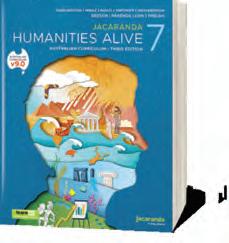
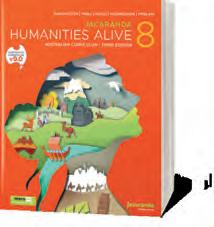
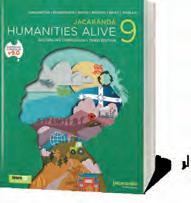
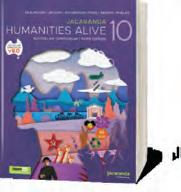
Whether students need a challenge or a helping hand, you’ll find what you need to create engaging lessons.
Whether in class or at home, students can access carefully scaffolded lessons with in-depth skills development while engaging multi-modal content designed to spark curiosity. Automatically marked, differentiated question sets are all supported by detailed sample responses – so students can get unstuck and progress

Personalise student learning pathways, ensuring that confidence builds and that students push themselves to achieve … all in learnON, Australia’s most innovative learning platform.
Through real-time results data, students can track and monitor their own progress and easily identify areas of strength and weakness.
And for teachers, Learning Analytics provide valuable insights to support student growth and drive informed intervention strategies.
Engaging, rich multimedia
All the teacher support resources you need
Deep insights into progress
Immediate feedback for students
Create custom assignments in just a few clicks.
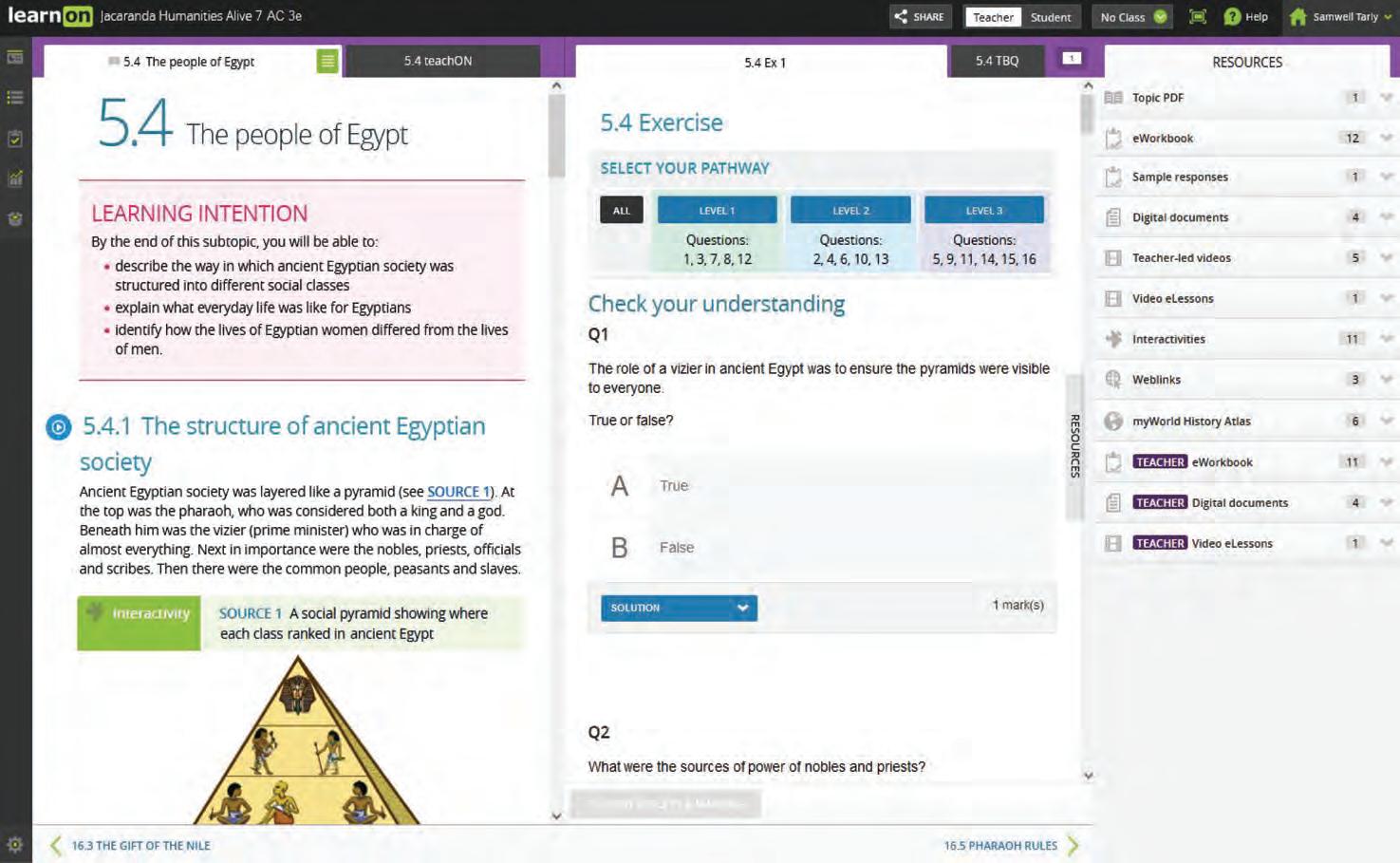


Differentiated question sets
Teacher and student views
Textbook questions
Answers and sample responses
eWorkbook
Digital documents

Video eLessons
Interactivities
Extra teaching support resources
Interactive questions with immediate feedback

Embedded interactivities and videos enable students to explore concepts
Trusted Jacaranda theory, plus tools to support teaching and make learning more engaging, personalised and visible.
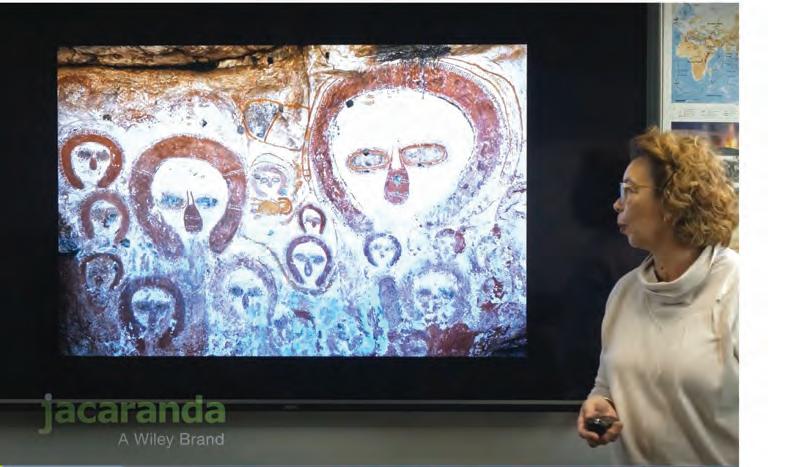
New teaching videos are designed to help students learn concepts by having a ‘teacher at home’, and are flexible enough to be used for pre-and post-learning, flipped classrooms, class discussions, remediation and more.

O nli ne, these ne w ed iti ons are the complete pa ck age
and learn deeply by ‘doing’.
Brand new! Tune in activities to spark interest and kick off every lesson with discussion and source analysis
Three differentiated question sets, with immediate feedback in every lesson, enable students to challenge themselves at their own level
Instant reports give students visibility into progress and performance
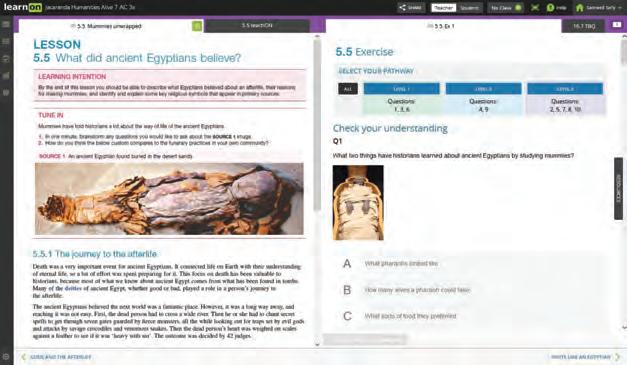
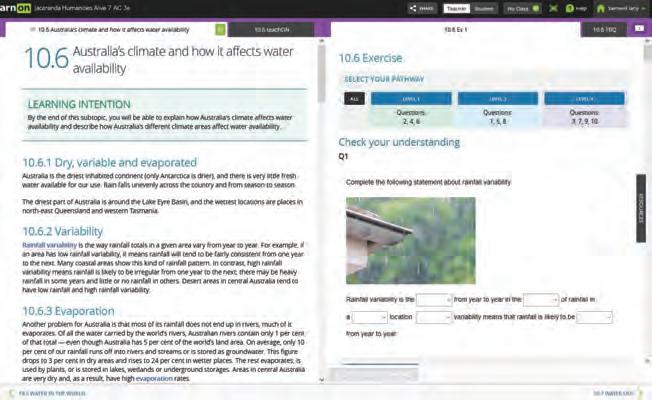
Every question has immediate, corrective feedback to help students overcome misconceptions as they occur and get unstuck as they study independently —in class and at home




New Tune In activities spark interest and kick off every lesson with discussion and source analysis.
New skill activities provide opportunities to develop and build crucial Humanities skills using research, collaboration and analysis.


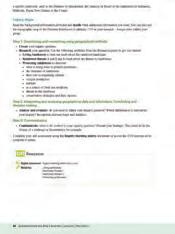














SkillBuilders support and strengthen skill development using our Tell me, Show me, Let me do it approach.
New Inquiry lessons use project-based learning and a clear skill structure for a deep dive into every topic while practising the curriculum-specific skills.
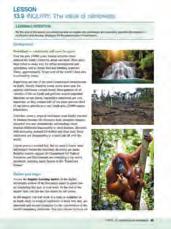
Enhanced teacher support resources for every lesson, including:
An inbuilt testmaker enables you to create custom assignments and tests from the complete bank of thousands of questions for immediate, spaced and mixed practice.
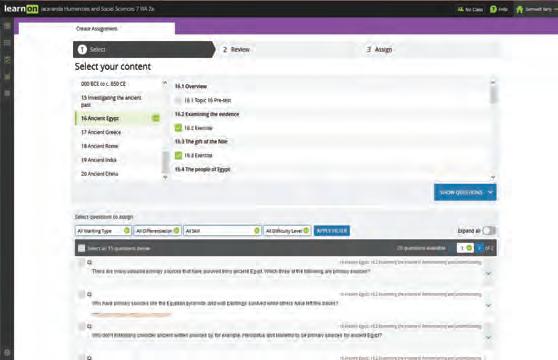


• work programs and curriculum grids
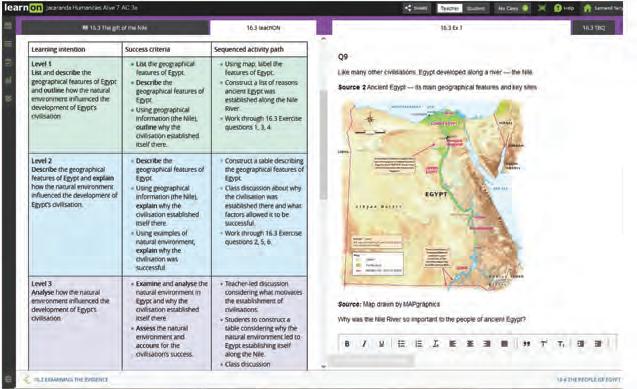
• practical teaching advice
• three levels of differentiated teaching programs
• quarantined topic tests (with solutions)

Data analytics and instant reports provide data-driven insights into progress and performance within each lesson and across the entire course.
Show students (and their parents or carers) their own assessment data in fine detail. You can filter their results to identify areas of strength and weakness.
The authors and publisher would like to thank the following copyright holders, organisations and individuals for their assistance and for permission to reproduce copyright material in this book.
Every effort has been made to trace the ownership of copyright material. Information that will enable the publisher to rectify any error or omission in subsequent reprints will be welcome. In such cases, please contact the Permissions Section of John Wiley & Sons Australia, Ltd.